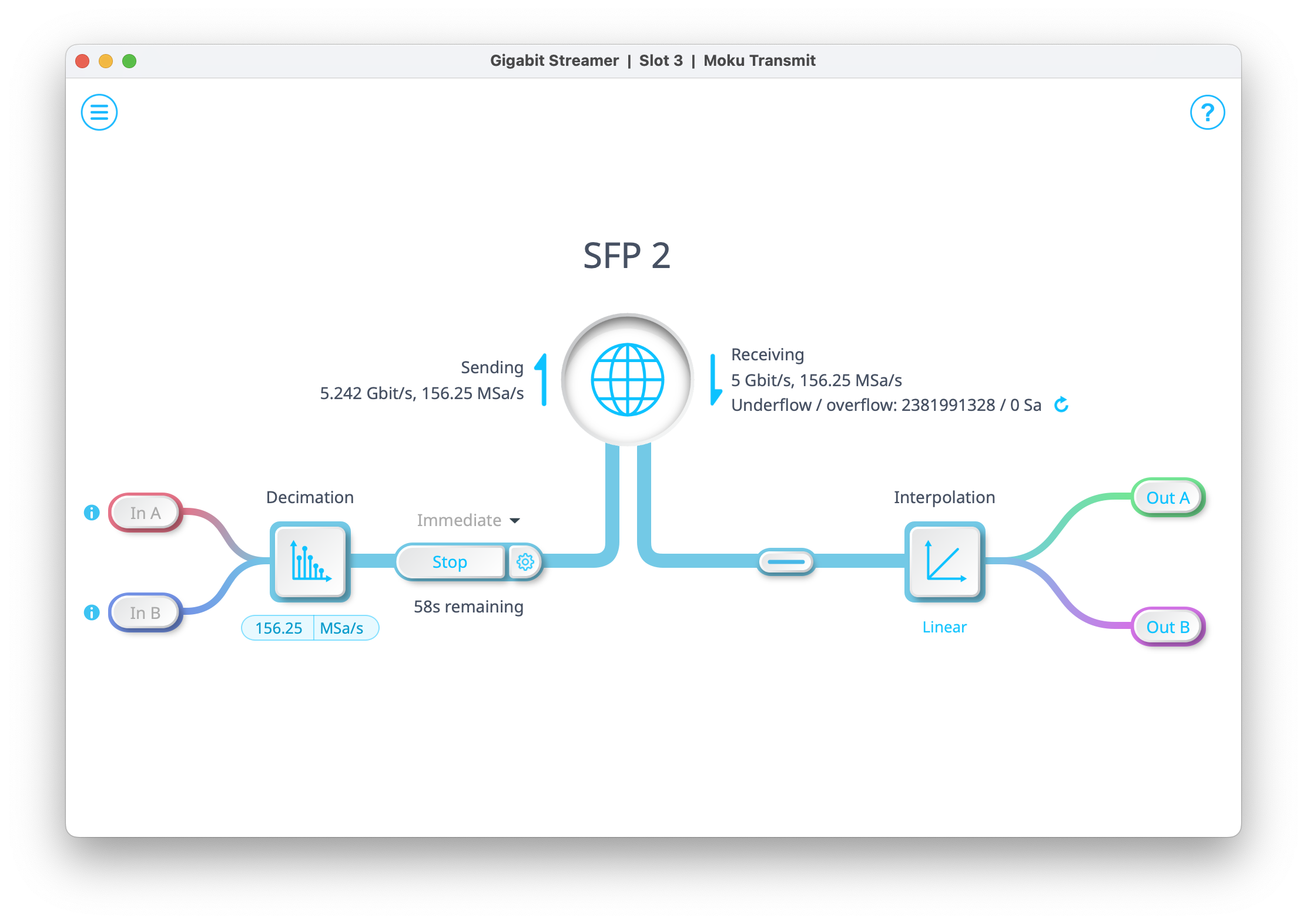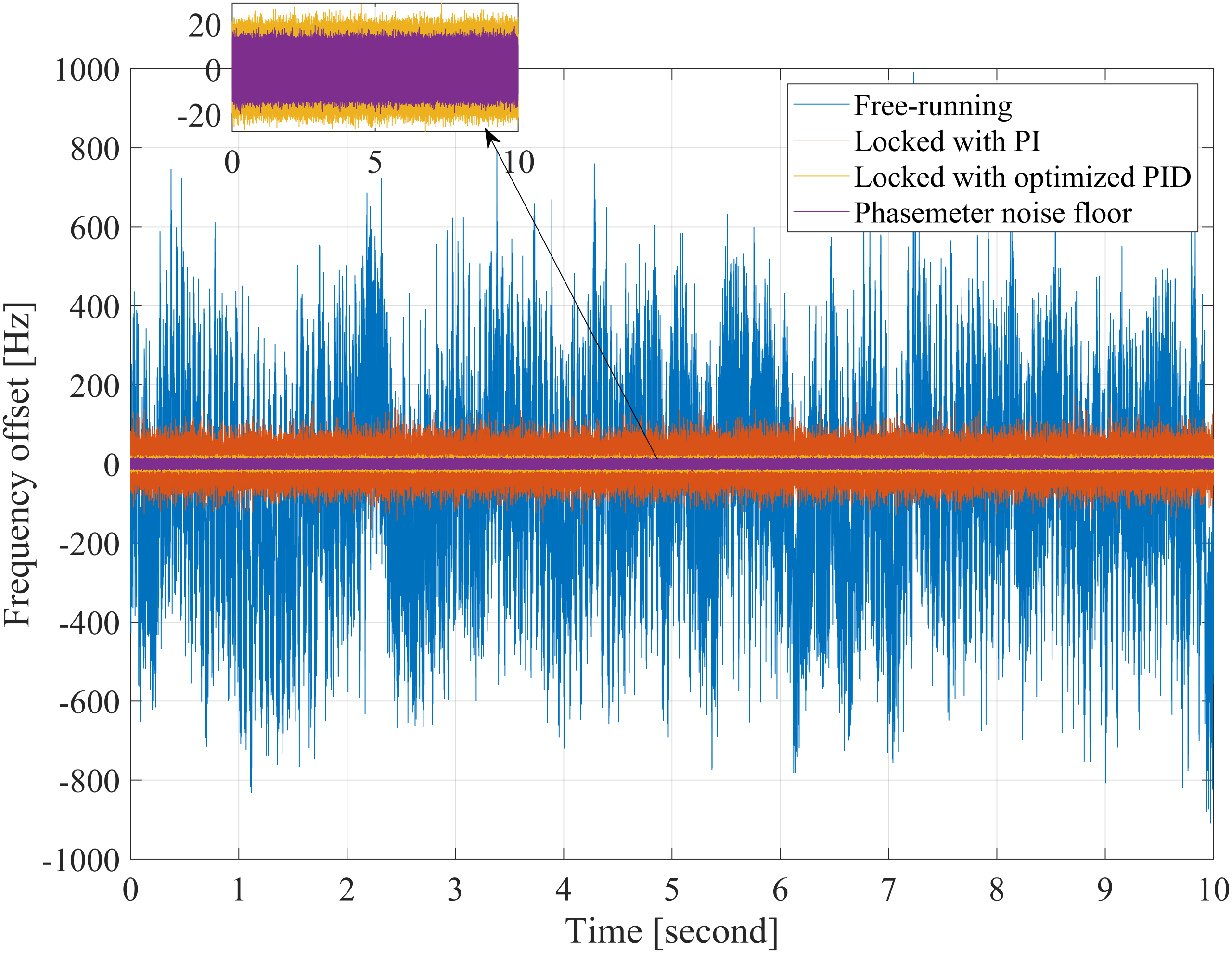Stability is vital for sensitive measurement systems. It is the key parameter that determines the precision and accuracy of such systems. Like a voltage reference in a voltmeter, the frequency and phase of a laser must be referenced to a stable source. In this technical note, we look at offset phase locking in optical systems as a method to transfer the stability of one optical system to another. For more information on measuring phase with precision, read our phase detection ebook.
Introduction
Optical phase-locking is a common technique for transferring the frequency and phase characteristics of one laser beam to another. It is commonly used in heterodyne metrology, free-space optical communications, and spectroscopic applications. In this technical note, we discuss the implementation of offset phase locking using a digital phasemeter and characterize the stability of phase locking of two lasers.
Optical Offset Phase Locking (in a nutshell)
To put it simply, offset phase locking stabilizes the phase difference between two lasers. This is done by first measuring the phase difference of the lasers and second, by feeding back to modify the frequency of one of the lasers to stabilize the phase difference.
Measuring the phase difference between two lasers is a relatively simple process combining the outputs of the two lasers (via a beamsplitter or similar) and illuminating a photodetector with the combined beam. The result is analogous to a mixing process and produces an oscillating signal at the difference frequency of the two lasers. We can refer to this as a beat note.
The power at the photodetector can be described through the following equations:
(01)

PPD and EPD are the power and electric field at the detector. E1 and E2 are the fields of the output of the respective lasers and are given by:
(02)

(03)

Where ω1 and ω2 denote the frequency, and ϕ1 and ϕ2 denote the phase of each laser. Substituting eq (2) and eq (3) into eq (1) we get
(04)

Note that the high-order terms are generally outside the bandwidth of the photodetectors. It is important to recognize that even though the beat note contains phase information of the lasers, this information is contained in the argument of the signal and is relatively difficult to use in feedback systems in this form. To extract the phase from the beat note we use a phase detector. A simple phase detector consists of a mixer followed by a low pass filter to transform the information into a baseband so that it can be used in a feedback system.
Once at baseband the phase signal can be fed back to one of the lasers to remove any differences between the two lasers. The complete setup is summarized below in Figure 1.

Figure 1: Schematic of a typical offset laser frequency lock system.
Phase-locked Loop (PLL) – a different type of phase detector
Although a mixer and low pass filter are adequate for most offset phase locking systems, they are not without their limitations. For one, the range of the mixer-filter combination is limited to ±π/2, and the phase output from the system is linear only when very close to zero. These range and linearity issues often make it difficult to deal with systems with large fluctuations. Using an additional phase-locked loop (PLL), instead of a standard mixer filter, for phase detection may help in these situations.
PLL is a technique used to establish a stable frequency and phase relation between two oscillators. It is widely used in modern electronics, integrated chips, and many other fields. A PLL has three main components: a phase detector, a loop filter, and a controllable/tunable oscillator. The phase detector generates a signal that contains a DC component that is (near) proportional to the phase difference between two signals. This signal is then sent to a loop filter (lowpass and/or PID) to remove the higher harmonics from the phase detector. The filtered error signal is then sent to an oscillator where the output frequency is controlled by the input DC voltage. By forming this closed loop and tuning the loop filter, a stable phase relation between the two oscillators can be achieved.
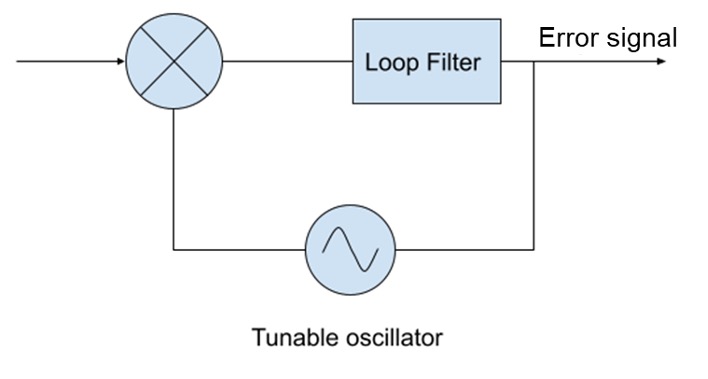
Figure 2: A block diagram of a typical PLL.
The PLL can assist in initial lock acquisition, removal of non-linear effects (such as cycle slipping), and ensure a more robust lock.
Offset Phase Locking with Moku:Pro
We demonstrated Moku: Pro’s Phasemeter offset phase locking architecture using two nonplanar ring oscillators (NPRO) lasers. The beams of the master and slave lasers were combined by a beamsplitter and interfered at a photodiode as shown in Figure 3. The beat note was connected to Moku: Pro’s input 1. The feedback signal was then connected to the frequency controller of the following laser.

Figure 3: Instrument setup for laser frequency offset locking.
Setting up the Phase Lock
Before the phase lock can be implemented the system needs to be tuned to the operating range. To acquire lock, the thermal actuators were used to coarsely tune the lasers to produce a beat note within the 600 MHz bandwidth of the Moku: Pro inputs. Once in range, the Phasemeter can be set to track the beat note by either using the auto-acquire function or by manually setting the frequency. Detailed information about the Phasemeter can be found in the Phasemeter User Manual.
Set the outputs to use phase and select a voltage scaling (this can be treated as gain in a typical control loop). You can generally start with a small gain a gradually increase the gain to optimize the system.
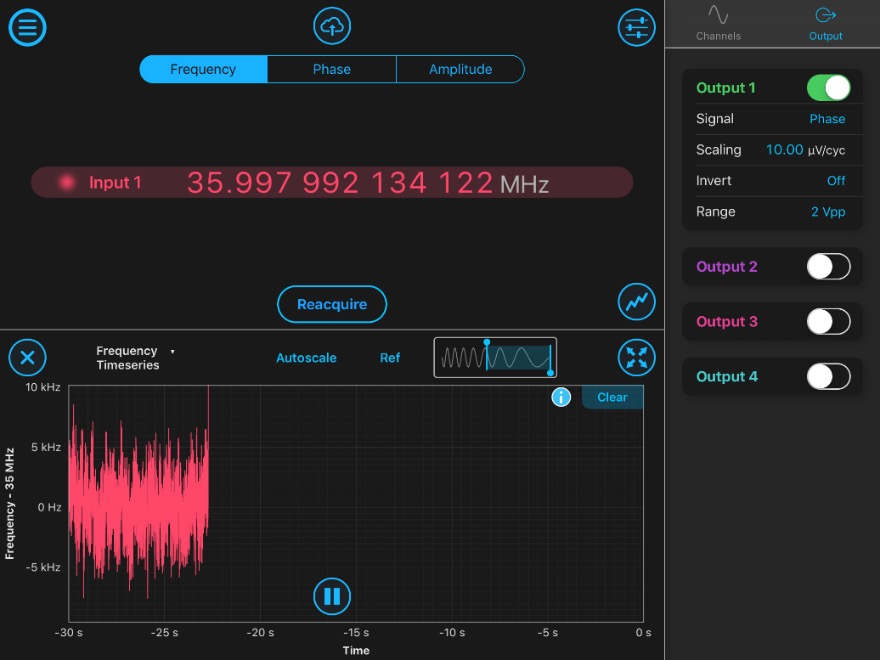
Figure 4: Control loop initial gain can be set under the ‘Output’ pane via ‘Scaling’
In manual operation, the initial frequency can be used to tune the frequency of the offset phase lock to the required frequency.
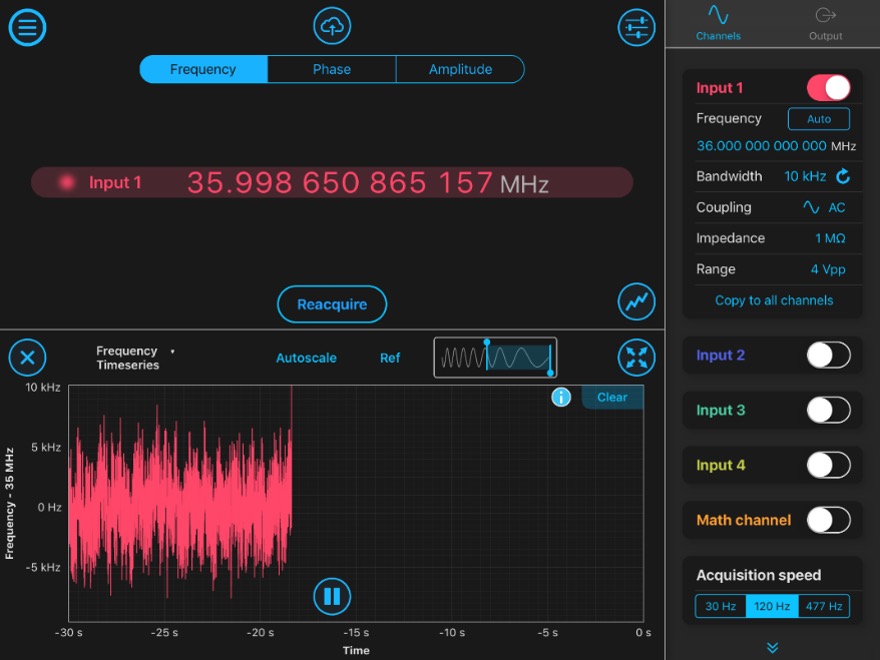
Figure 5: The offset frequency can be tuned via the “Frequency” under “Channel” pane.
Lock Performance
The performance of the phase lock was measured using a separate Phasemeter running on a Moku:Lab. Figure 6 shows the locked and free running frequency (a), and phase (b) over a measurement of 60 seconds. Both phase and frequency fluctuations between the two lasers can be clearly seen to be significantly reduced.
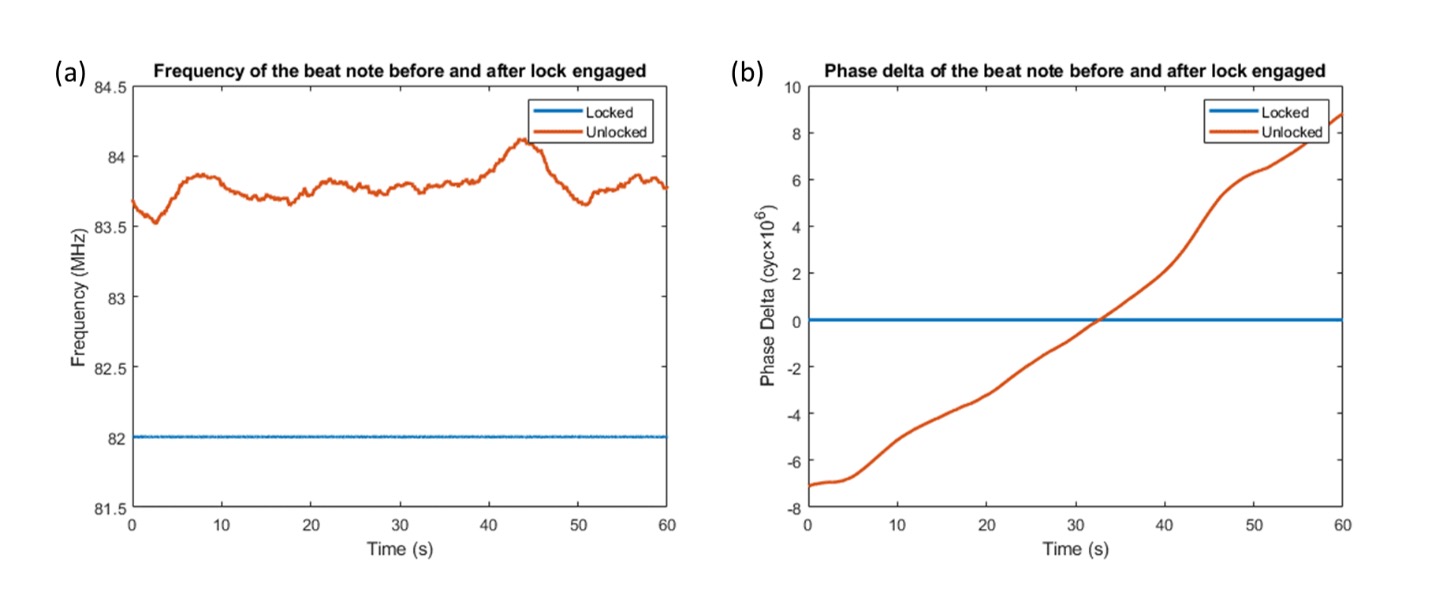
Figure 6: Frequency (a) and phase (b) of the offset beat note locked and unlocked.
Taking the amplitude spectral density of the frequency we see that an improvement in the stability of over 4 orders of magnitude was measured, with relative frequency stability of 1 Hz/√Hz measured down to 0.1 Hz.
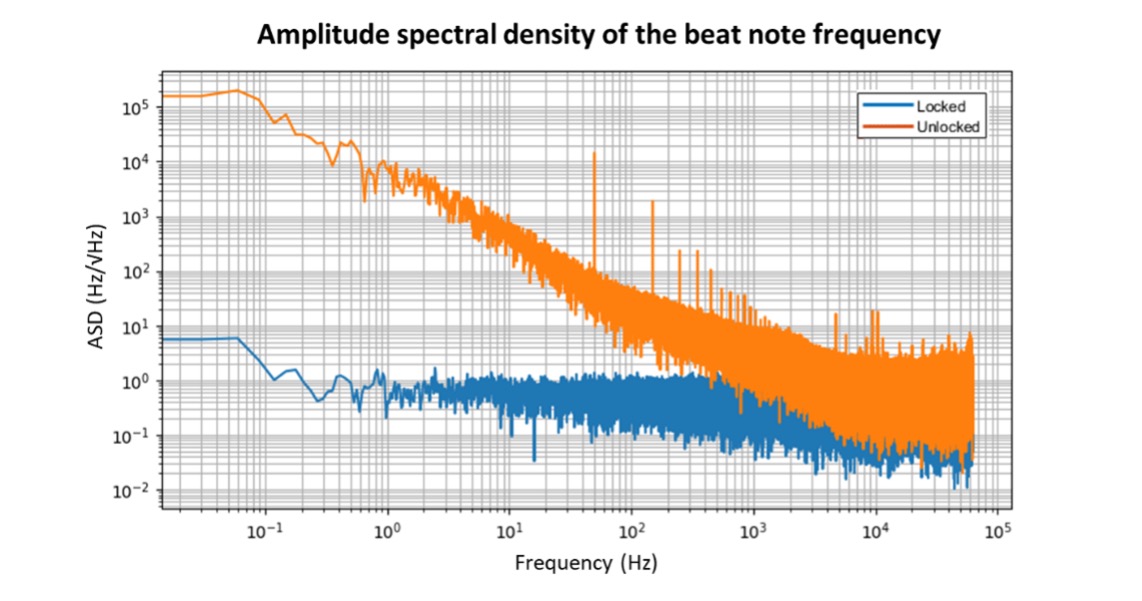
Figure 7: Power spectral density of the offset beat note before and after the lock was engaged.
Conclusion
Laser offset locking maintains the frequency difference between a master and a slave laser. The dynamic range for the phase error signal in such a system is typically beyond 2π, where a mixer-type phase detector may fail to continuously track the signal. Moku:Pro’s Phasemeter implements four independent PLL phase detectors with automatic phase unwrap functions. A stable lock between two lasers with an 82 MHz offset was demonstrated with a frequency stability better than 1 Hz/√Hz at 10 Hz.
Acknowledgment
We would like to thank The Australian National University for providing us with the details of their experiment, an explanation of the use of Moku:Pro, and feedback. The experiment at the ANU was supported by the ARC Centre of Excellence for Gravitational Wave Discovery.
References
[1] Schünemann, U., H. Engler, R. Grimm, M. Weidemüller, and M. Zielonkowski. “Simple scheme for tunable frequency offset locking of two lasers.” Review of Scientific Instruments 70, no. 1 (1999): 242-243.
[2] Bell, S. C., D. M. Heywood, J. D. White, J. D. Close, and R. E. Scholten. “Laser frequency offset locking using electromagnetically induced transparency.” Applied physics letters 90, no. 17 (2007): 171120.
[3] Thorpe, James I., K. Numata, and J. Livas. “Laser frequency stabilization and control through offset sideband locking to optical cavities.” Optics express 16, no. 20 (2008): 15980-15990.
[4] Hsieh, Guan-Chyun, and James C. Hung. “Phase-locked loop techniques. A survey.” IEEE Transactions on industrial electronics 43, no. 6 (1996): 609-615.
Have questions or want a printable version?
Please contact us at support@liquidinstruments.com




